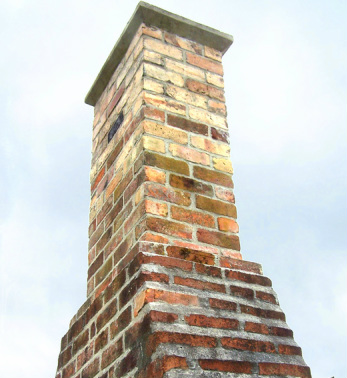|
from woodheat.org
A good chimney and system design produces desirable performance characteristics:
This is good wood stove performance: (hint: it's really the chimney that's doing the performing!)
Think of the chimney as the engine that drives the wood heating system. Think of its fuel as heat. Think of the power it puts out as draft. The more fuel (heat) you give this engine (chimney), the more power (draft) it will deliver. So, the hotter the exhaust gases, the more draft is produced. Draft, by the way, is good. It's the suction that keeps the smoke from coming into the room. Insulation in the chimney is important because it helps to keep the exhaust hot until it is expelled outside, and so, increases draft. The chimney works with the stove or fireplace in a kind of feedback loop. Heat in chimney makes draft, which pulls in more combustion air, which makes the fire burn hotter, which delivers more heat to the chimney which makes more draft and so on. An insulated chimney makes more draft with less heat. In winter, a well-designed and properly installed chimney makes some draft and flows some air upwards, even when no fire is burning. When you build a fire in a stove connected to such a chimney, the kindling ignites easily, draft increases rapidly and you have a nice bright, hot fire right away—and no smoking. This is the kind of system you want in your house.
7 Comments
9/23/2020 01:02:47 am
This blog is extremely interesting! Very good post. I certainly appreciate this website.
Reply
9/23/2020 01:48:12 am
What an amazing and well thought out write-up.
Reply
5/11/2023 11:26:32 am
As a chimney business owner, I completely agree with this article. A good chimney is essential for any wood heating system to function properly. It's not just about having the right type and size of chimney, but also about the proper installation following building code or manufacturer's instructions. I have seen many cases where a poorly installed chimney led to serious safety hazards for the homeowner.
Reply
4/11/2024 09:12:09 pm
Thank you for this comprehensive guide on chimneys! As a homeowner, I've always been curious about how to properly maintain and protect my chimney, and your article has provided me with all the essential information I need. From the importance of chimney top covers to the various types available, your insights have been invaluable. I appreciate the clarity and depth of your explanations, making it easy for even a novice like myself to understand. Keep up the excellent work!
Reply
4/23/2024 03:43:45 pm
Thank you for writing a blog all about essential chimney information. Being a Chimney Sweep in Dallas, we often find chimney's are not up to standard fire code or the correct dimensions.
Reply
Leave a Reply. |
See Our WorkAn All Season Control Cover in action speaks for itself. See how our product solves many types of chimney and fireplace issues. Archives
September 2015
Categories
All
|


 RSS Feed
RSS Feed
